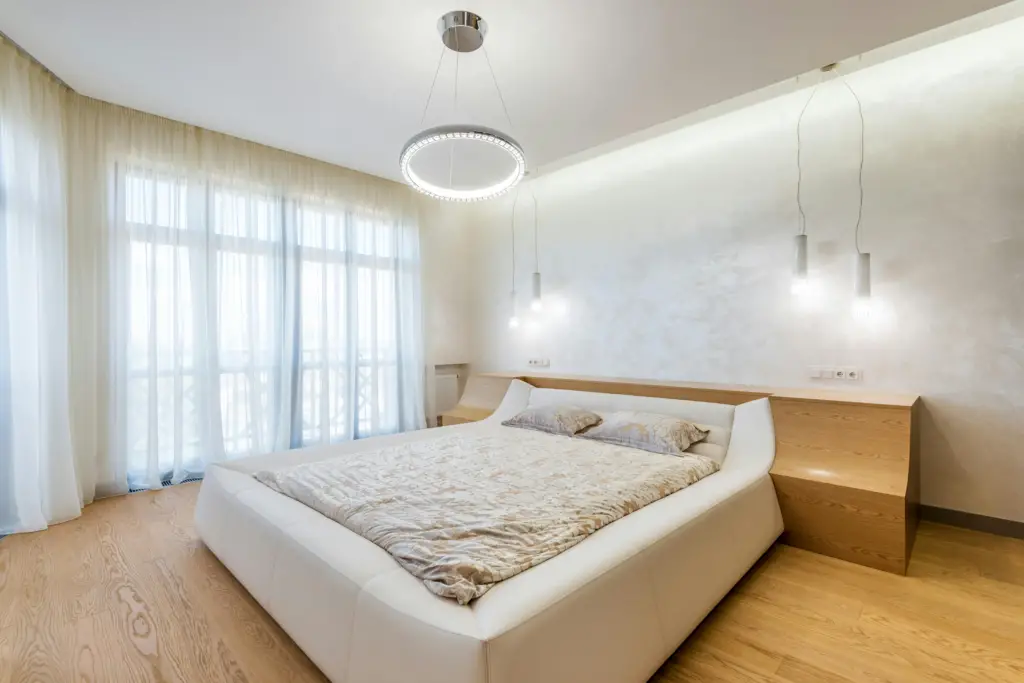You’re not the only one who has ever been annoyed by a flickering light in your bedroom. It’s a typical problem that might make you feel uneasy and perhaps make you fear for your safety. However, why does it occur and what can be done to prevent it? Let’s examine workable ideas and throw some light on this issue.
Understanding the Flickering
Flickering lights can be caused by various factors, ranging from simple to more complex issues:
- Loose Bulb or Connection: A light bulb that is loose is among the easiest causes. Bulbs may eventually break away from their sockets as a result of temperature fluctuations or vibrations. This leads to sporadic contact, which makes things flicker.
- Faulty Light Switch: Occasionally, the switch itself is the problem rather than the lightbulb. Flickering might result from an uneven electrical flow to the lightbulb caused by a malfunctioning switch.
- Voltage Fluctuations: Fluctuations in electrical voltage supply can also cause lights to flicker. This can happen due to issues with the electrical grid or heavy power usage in your home.
- Wiring Issues: Flickering lights may be caused by old, damaged, or badly installed wiring in your home. An interruption in the electrical current that reaches your light fixtures can be caused by poor wiring.
- Fixture Problems: Occasionally, the problem lies within the light fixture itself. Issues such as worn-out sockets or faulty internal wiring can cause flickering.
Diagnosing the Problem

Finding the source of the flickering is necessary before you can address it. The steps to identify the problem are as follows:
- Check the Bulb: Make sure the lightbulb is firmly inserted. To rule out a faulty bulb, try replacing it with a new one if the flickering persists.
- Inspect the Light Switch: Turn the switch on and off several times to see if this affects the flickering. If it does, the switch may need to be replaced.
- Examine Other Lights: Look around to see if any other lights in your house flicker. If they are, your electrical system might be the problem instead of a particular light fixture.
- Consider Voltage Issues: If voltage fluctuations are suspected, you may need to consult with an electrician to test the electrical supply to your home.
- Look for Wiring Problems: Inspect visible wiring for any signs of damage, wear, or improper connections. However, exercise caution when dealing with electrical components.
Fixing the Flickering
Once you’ve pinpointed the cause, you can take steps to fix the flickering issue:
- Tighten or Replace Bulbs: Ensure bulbs are securely screwed into their sockets. Replace any bulbs that continue to flicker after tightening.
- Replace the Light Switch: If the switch is faulty, replacing it with a new one can restore normal operation.
- Address Electrical Issues: It’s advisable to work with a licensed electrician for more complicated concerns such wiring faults or voltage swings. They are able to precisely identify the issue and carry out any required fixes or modifications.
- Upgrade Fixtures: If the light fixture itself is the problem, consider replacing it with a new one. Modern fixtures often come with improved internal wiring and sockets.
Safety First

When dealing with electrical issues, safety is paramount:
- Prior to checking or servicing electrical components, always cut off the power to the impacted circuit. .
- Seek the advice of a certified electrician if you are hesitant or uneasy handling electrical systems.
Final Thoughts
Although it might be annoying, knowing the reasons behind and how to resolve flickering bedroom lights can help. Finding the source of the flickering is the first step in finding a remedy, whether it’s a straightforward loose bulb or a more complicated wiring issue. You can have consistent, dependable lighting in your bedroom once more by paying attention to these suggestions and using caution.

